
Gottfried Christian Friedrich Lücke was a German theologian.

Theodosius Andreas Harnack was a Baltic German theologian.
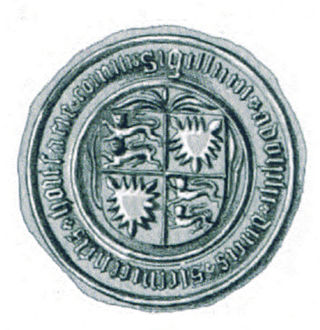
Adolphus XI of Schauenburg, as Adolph I Duke of Schleswig, and as Adolph VIII Count of Holstein-Rendsburg, was the mightiest vassal of the Danish realm.
Johann Nicolaus Bach was a German composer of the Baroque period.
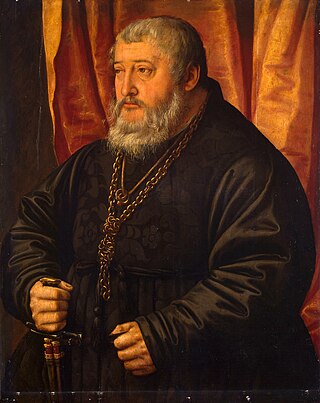
Otto-Henry, Elector Palatine, a member of the Wittelsbach dynasty was Count Palatine of Palatinate-Neuburg from 1505 to 1557 and prince elector of the Palatinate from 1556 to 1559. He was a son of Rupert, Count Palatine, third son of Philip, Elector Palatine; and of Elizabeth of Bavaria-Landshut, daughter of George of Bavaria.
Polycarp, was one of the Christian Apostolic Fathers and Bishop of Smyrna.

Frederick Michael, Count Palatine of Zweibrücken-Birkenfeld was a member of the Wittelsbach dynasty. He was the son of Christian III of Palatinate-Zweibrücken and Caroline of Nassau-Saarbrücken and a member of the House of Palatinate-Zweibrücken-Birkenfeld, a branch of the House of Wittelsbach. He was the father of the Bavarian King Maximilian I Joseph.
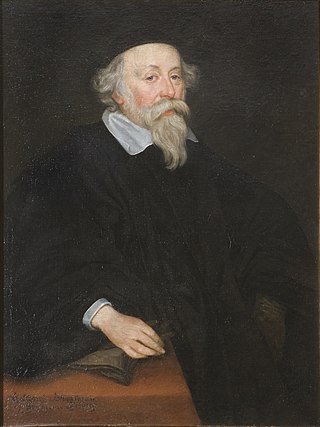
John Casimir, Count Palatine of Zweibrücken-Kleeburg was the son of John I, Count Palatine of Zweibrücken and his wife, Duchess Magdalene of Jülich-Cleves-Berg. He was married to Catherine of Sweden and was the founder of a branch of Wittelsbach Counts Palatine often called the Swedish line, because it gave rise to three subsequent kings of Sweden, but more commonly known as the Kleeburg line.

Augustin Friedrich Walther was a German anatomist, botanist and physician who was a native of Wittenberg. He was the son of theologian Michael Walther the Younger (1638–1692).
Michael Gottlieb Agnethler was a German botanist and numismatist.

Matthias Hoë von Hoënegg was a German Lutheran pastor.
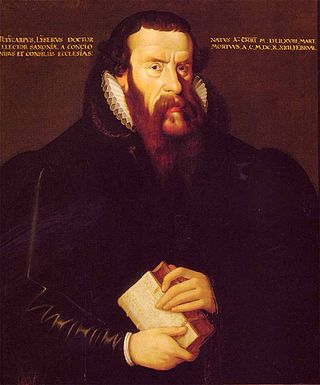
Polykarp (von) Leyser the Elder or Polykarp Leyser I was a Lutheran theologian, superintendent of Braunschweig, superintendent-general of the Saxon church-circle, professor of theology at the University of Wittenberg and chief court-preacher and consistorial-councillor of Saxony.

Polykarp Leyser III. was a German Lutheran theologian, superintendent, chaplain (Oberhofprediger), and orientalist.
Polykarp Leyser IV was a German Lutheran theologian, philosopher, physician, lawyer and historian. He was the son of Polykarp Leyser III, the great-grandson of Polykarp Leyser II and the great-great grandson of Polykarp Leyser the Elder, all also theologians.
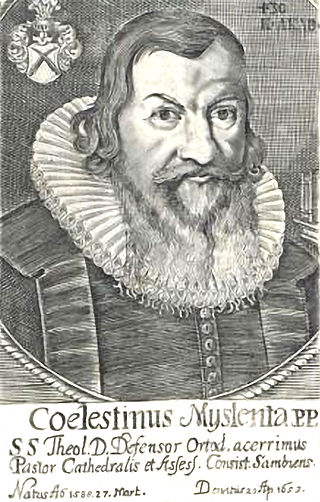
Celestyn Myślenta was a Polish Lutheran theologian and rector of the University of Königsberg. Celestyn was the son of Mateusz Myślenta and Eufroza née Wiercinska. His father was once employed by Duke Radziwill and belonged to the Polish nobility. As a stipendiary of the duke of Prussia he studied at University Königsberg, then became Lutheran pastor in Kuty from 1581-1599.

Johann Wolfgang Jäger was a German professor of Protestant theology and chancellor of the University of Tübingen. He was born on 17 March 1647 in Stuttgart and died on 20 April 1720 in Tübingen.
Michael Leyser was a German physician and anatomist.

Carl Friedrich Petersen was a Hamburg lawyer and politician, who served several terms as First Mayor of Hamburg. He was a Hamburg senator from 1855 until his death.
Jakob Franck was a German philologist and teacher who contributed more than 300 biographical entries to the German General Biographical Dictionary .

Jakob Martini was a German Lutheran theologian and philosopher.














